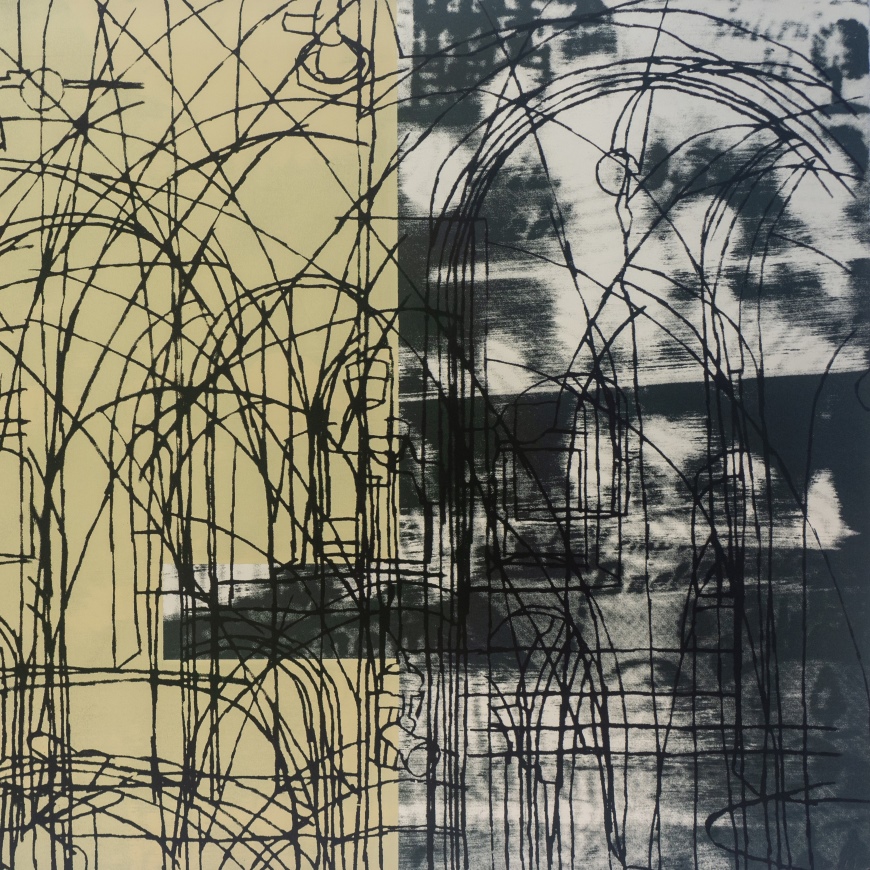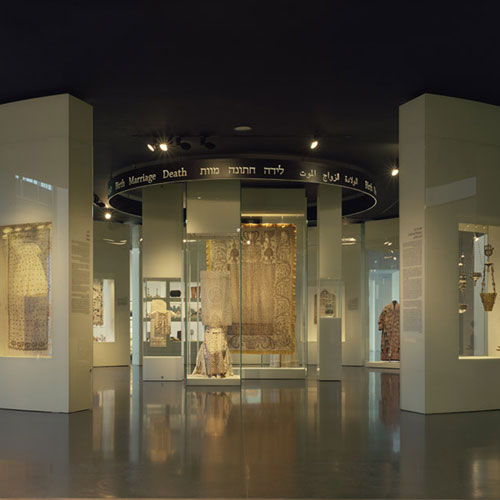
Dressed for Eternity
Jewish Shrouds through the Ages
-
March 3 2023 - February 24 2024
Curator: Efrat Assaf-Shapira
Designer: Rona Cernica
-
Bella and Harry Wexner Gallery
An exhibition on the clothing of the dead may elicit some discomfort; like all matters concerning death, it is a subject we’d rather not think about. Nevertheless, having chosen to focus on this sensitive topic, we discovered a fascinating world.
This exhibition of shrouds is the direct continuation of previous displays showcasing items of clothing and fashion in Jewish culture. As is the case with the clothes of the living, the story of the changing form of shrouds exemplifies the transition from traditional costume unique to each community, toward unification.
In the past, shrouds were sewn by members of the community, in some cases by the very people for whom they were eventually intended. How, then, did these garments arrive at the Museum? When did the tradition of shroud-making begin? Is it customary among Jews only? What items does a shroud set contain? Why is the color of shrouds almost always white, why are they made of cotton or linen, and what can we learn from the differences between the shrouds of various communities?
We invite you to join us on a journey in which the exemplars – taken mostly from the rich costume collection of the Israel Museum – will gradually reveal the answers to these questions and others. Perhaps, upon emerging from the exhibition, you’ll give some more thought to the view that sees death – shrouds included – as a natural continuation of life.

Set of woman's burial shrouds
Frankfurt am Main, Germany, late 19th – early 20th century
Linen, lace
Gift of the Shenhav, Moeller, Shragai, and Glick families, Israel, in memory of Recha Hamburger
B10.0863
Photo:© The Israel Museum, Jerusalem, by Elie Posner
- May 01
- May 01
- Apr 26May 02May 03May 09May 10May 16May 17May 23May 24May 30May 31
- May 03May 10May 17May 24May 31
- Apr 21Apr 24Apr 28May 05May 08May 12May 15May 19May 22May 26May 29
- Apr 21Apr 28May 05May 12May 19May 26
- Apr 21Apr 24Apr 28May 05May 08May 12May 15May 19May 22May 26May 29
- Apr 22May 06
- May 06May 27
- May 06
- May 06
- May 06Jun 10
- May 08May 15May 15May 22May 29
- May 08May 15May 22May 29
- May 08May 15May 22May 29
- May 08
- Apr 24May 08May 15May 22May 29





















